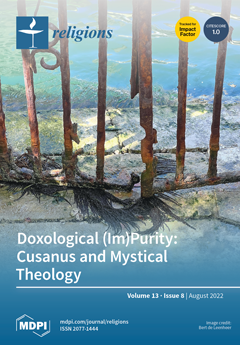The relationship between the individual and the collective is one of the most important topics in Confucianism. Though this concept has been widely studied,
ming 名 (meaning ‘name’)
, one of its most crucial categories, has not yet been deeply explored within this theoretical domain. This article discusses four aspects of
ming and their contributions to the relationship between the self and community. Firstly, Confucius’ proposition of
zhengming 正名 (rectifying names or the rectification of names) implies that language, especially that of rulers or gentlemen 君子 (
junzi), has a considerable impact on both ethical and political practices. In this sense,
ming as language establishes a relationship between rulers and the communities they govern. Secondly, in Confucius’ use of
ming, reputation also reflects the attributes of a collectivity. On one hand, reputation functions as a social evaluation system; on the other, it can also be used to shape social values. Both aspects of language and reputation can be found in Confucius’ sayings, and are essentially determined by the sound attributes of
ming. Thirdly,
ming is interpreted to mean “role” in the later explanations and commentaries of
Analects 13.3, which signifies that each individual has their own role in the community to which they belong. The position of a social individual is determined according to their relationship with others. Simultaneously, it is also the idea of “role” that brings a hierarchical order to family, state, clan, and “all under heaven”. Finally, the relationship between
ming and
yi 義 (appropriateness) implies the correlation between a name and the subject to which it refers. For ethical or political participants,
yi means that the name-bearer is bound to a series of demands regarding their behaviors and virtues, which can lead to a “thick” conception of the subject, that is, the role of a complex of virtues, duties, and even rights (albeit implicit). Although the meaning of
ming was becoming more complicated and profound during the development of early Confucianism, it has always functioned as the bond between individual and community. In this regard, the Confucian theory of
ming can contribute some insights toward the combination of Confucianism and communitarianism, and also toward the modernization of Confucianism.
Full article





